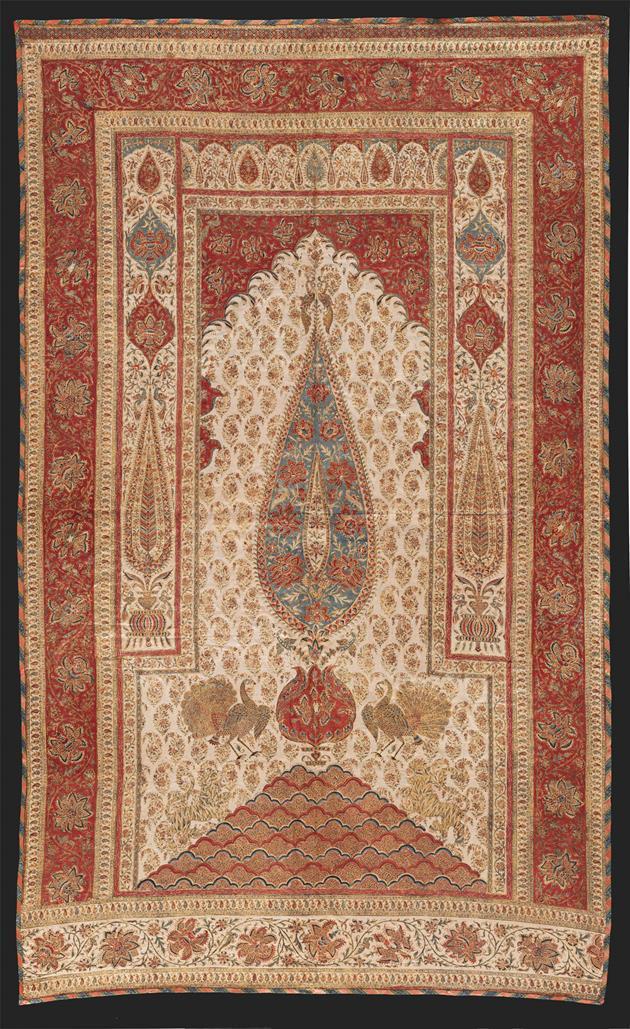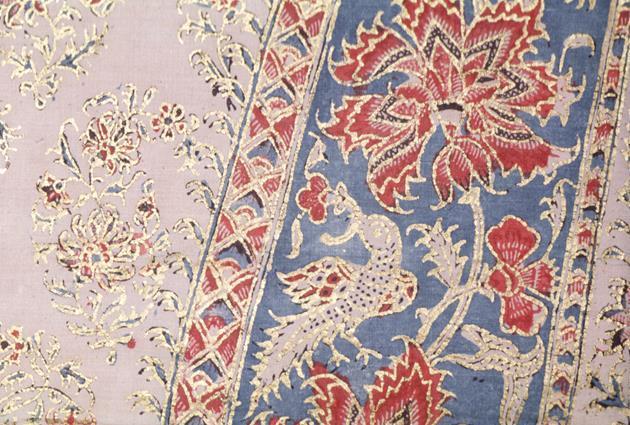Palampore (bed covering)
early 19th century
This palampore (bed covering) is a chintz, a floral print fabric made of cotton or linen that is hand-drawn with a kalam (bamboo pen) using various techniques of mordants (to fix to a dye) and resists (to prevent the dye from reaching all the cloth). As a later production, this chintz employed both kalamkari (pen-work) and block printing. Many palampores depict a twiggy plant emerging from rocky mounds, a motif partially borrowed from Chinese porcelain designs. Uniquely, this rocky mound is highly stylized with a pomegranate and Cyprus tree arising from its peak. Due to its elaborate composition of peacocks, tigers, and other floral motifs, this palampore was likely intended for a wealthier client.
For centuries, chintz textiles were exported from the Coromandel Coast and were locally patronized by the Mughal and Deccan courts. After the arrival of Europeans in India, they dominated the market, exporting chintz across the globe.
Cotton with paint, dye, and gilt
50 1/4 in. (127.64 cm)
L.: 84 in.
Eugene Fuller Memorial Collection
39.64
Photo: Elizabeth Mann






